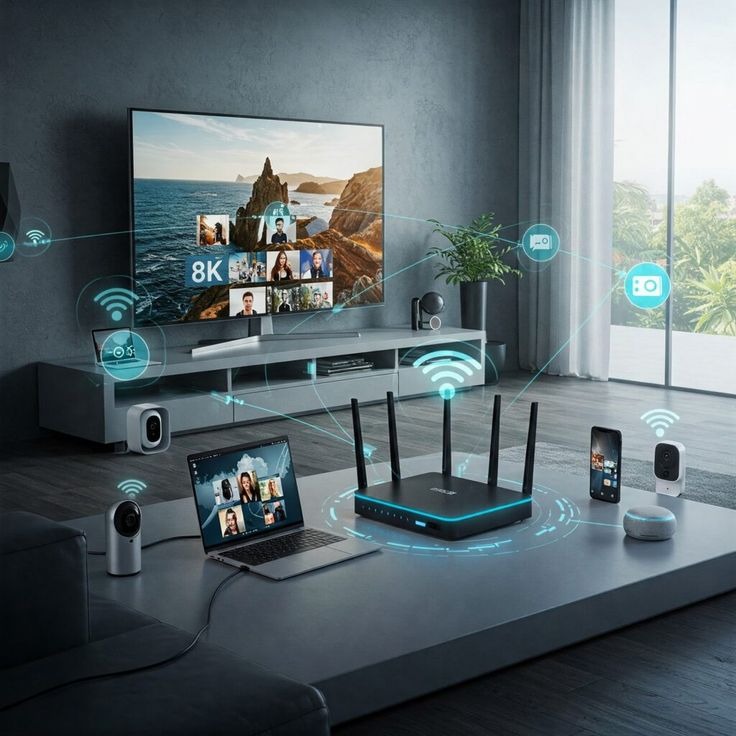
Smart Home Solutions: A Comprehensive Guide for Bangladesh

Introduction
Struggling with soaring electricity bills or sleepless nights worrying about home security in busy Bangladesh? Imagine tapping your phone to control lights, AC, or door locks —saving money and stress in a moment. Smart home technology, often Googled as “smart home BD,” transforms daily life with automation, making your home work smarter for you.
In Bangladesh’s bustling cities, power cuts, rising costs, and safety concerns are real headaches. Smart homes address these challenges directly with connected devices, such as sensors and apps. The global market is expected to explode, reaching $121 billion in 2024 and set to hit $633 billion by 2032 (Fortune Business Insights). With a tech-curious middle class growing, these solutions are no longer a luxury but a necessity.
This guide unpacks the basics of smart homes: how they work, their benefits such as cost savings and peace of mind, and why they are a perfect fit for Bangladesh. From top devices to setup tips, we’ve got you covered.
Ready to upgrade your home? Keep reading for expert advice to kickstart your smart home journey!
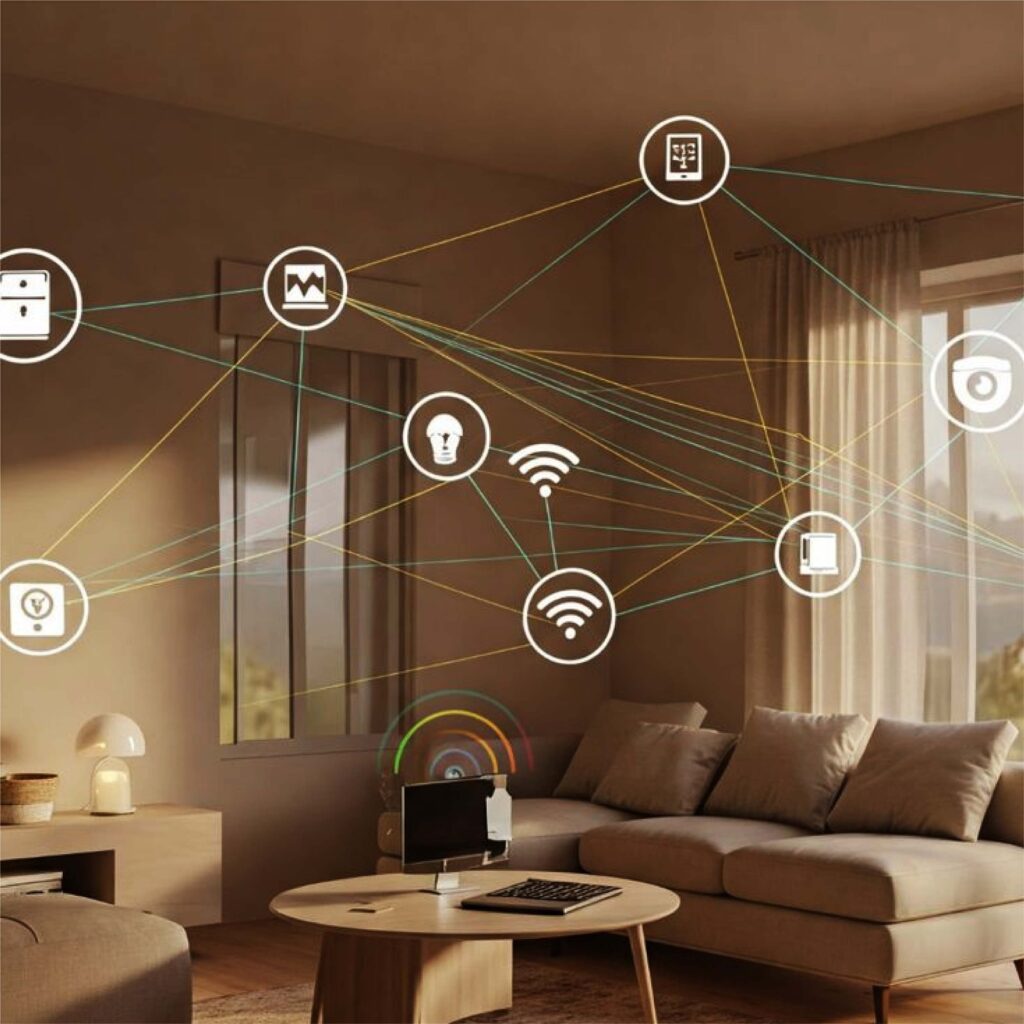
What Is The Smart Home Solutions?
A smart home (also called home automation or domotics) is a residence equipped with networked sensors and devices that can be remotely controlled and monitored. A typical system consists of three core elements:
- Hub or Controller – This central unit communicates with individual devices, processes data, and allows users to manage the system. Popular hubs include Amazon Echo, Google Home, Apple HomePod, Samsung SmartThings, and open-source platforms. Modern systems also support the Matter interoperability standard, enabling seamless communication between devices from different brands.
- Sensors – Devices such as smart thermostats, motion detectors, and environmental sensors collect data about the environment (e.g., temperature, motion, and light levels). They send this data to the hub for decision-making.
- Actuators and Smart Devices – These devices perform actions, such as adjusting the brightness of bright lights, regulating HVAC systems with thermostats, securing doors with locks, and monitoring activity with cameras. They respond to user commands or automated routines triggered by sensors.
Smart devices communicate through wireless protocols. Wi-Fi offers high bandwidth, making it ideal for cameras and streaming devices, but it can also consume more power. Bluetooth Low Energy (BLE) is an energy-efficient technology used for sensor applications. Zigbee and Z-Wave are mesh-network protocols designed for IoT, allowing devices to connect over long ranges with low power. The Matter standard, introduced in 2024, unifies these protocols, allowing devices to work seamlessly regardless of their brand or communication method.
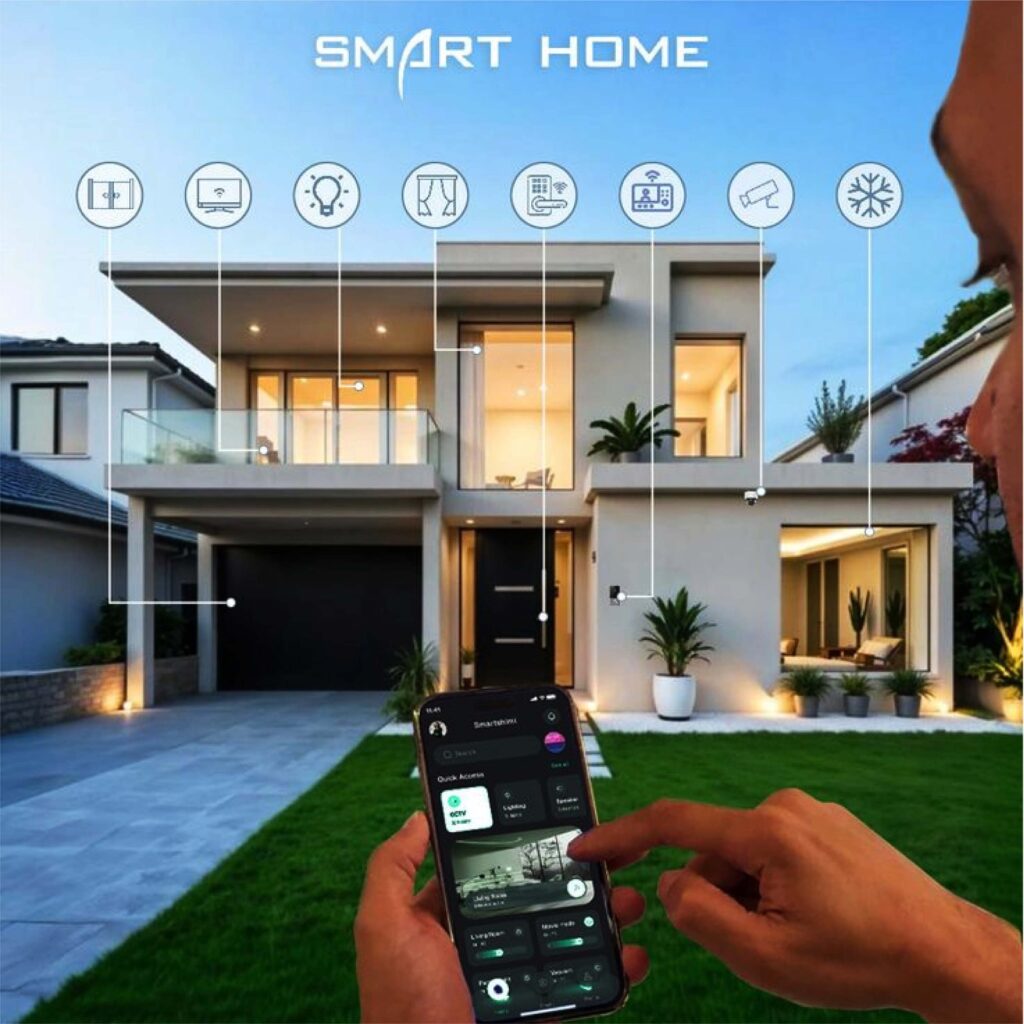
How Smart Homes Work
A smart home works by collecting data from sensors, processing it through the hub, and executing actions via actuators. For instance, a motion sensor might trigger hallway lights at night, or a thermostat could adjust the temperature based on learned routines. AI algorithms can analyze patterns to optimize energy use or enhance comfort.
Smartphones and voice assistants, such as Amazon Alexa, Google Assistant, and Apple Siri, enable users to control devices remotely, receive notifications, and create custom “scenes” (e.g., “movie night,” which dims the lights and closes the blinds). Modern systems often integrate with cloud services, enabling remote monitoring and analytics.
Benefits of Smart Home Automation
Energy Savings
Energy management is one of the primary reasons homeowners adopt smart technology. By integrating energy-efficient devices and automation routines, residents can lower electricity bills and support sustainability:
- LED and Smart Lighting: High-quality LED bulbs use at least 75% less electricity and last longer than incandescent bulbs. Smart lighting adds further savings by dimming lights, responding to occupancy, and utilizing daylight (daylight harvesting). Smart LED bulbs typically last 15,000–25,000 hours compared with 1,000 hours for incandescent bulbs.
- Smart Thermostats and HVAC Control: Devices like Google Nest and Ecobee learn user habits and adjust heating/cooling accordingly. ENERGY STAR estimates that smart thermostats can reduce heating and cooling costs by about 8%. In Bangladesh, similar savings can be expected by optimizing air conditioners and fans.
- Smart Plugs and Power Strips: These devices enable remote control of lamps and appliances, featuring scheduling capabilities and tracking of electricity consumption. Smart plugs serve as an affordable entry point into home automation.
- Energy Monitoring and Solar Integration: Advanced systems track real-time energy usage, identify wasteful devices, and offer actionable insights for reducing consumption. In Bangladesh, where load shedding and energy security are significant concerns, integrating bright lighting with solar-powered devices can help reduce reliance on the national grid.
Enhanced Security
Smart home systems also offer enhanced security, especially in urban Bangladesh:
- Smart Cameras and Sensors: Internet-enabled CCTV cameras provide high-definition video, motion detection, and real-time alerts. When integrated with smartphone apps, users can monitor live feeds from anywhere.
- Smart Locks and Access Control: Devices like Samsung’s SHP-P50 smart lock offer keyless entry using fingerprint, PIN, and NFC cards. Some locks integrate with video doorbells for visitor verification.
- Lighting and Presence Simulation: Smart lights can deter intruders by turning on automatically when motion is detected or simulating occupancy when residents are away.
- Smoke, Gas, and Water Leak Detectors: These alarms instantly alert homeowners via smartphone, enabling them to take quick action and prevent disasters.
Comfort, Convenience, and Personalisation
Smart homes enhance quality of life by providing personalized control. Residents can adjust lights, climate settings, and entertainment systems through voice commands or smartphone apps.
Smart kitchen appliances, such as rice cookers and refrigerators that track groceries, simplify daily tasks and reduce food waste.
Voice assistants further enhance accessibility, especially for elderly or disabled users.
Property Value and Return on Investment (ROI)
Smart home installations can increase property value. A study revealed that 11% of homebuyers actively sought homes equipped with smart technology, which commanded a 5% price premium.
Whole-home automation packages range from $2,000 to $ 6,000, but high-end systems can exceed $10,000. In Bangladesh, energy savings and security benefits can provide long-term returns.
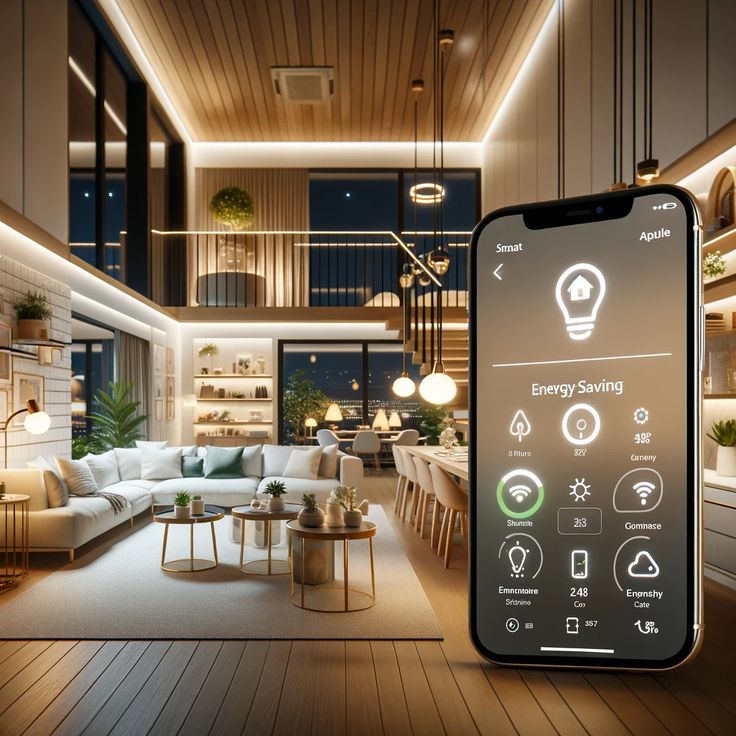
Smart Home Trends and Adoption in Bangladesh
Bangladesh is experiencing rapid growth in smart home adoption due to several factors:
- Urbanization and Lifestyle Demands: Cities like Dhaka face congestion and rising living costs. Homeowners seek automation to improve convenience and security while reducing energy consumption.
- Affordable Solutions and Local Startups: Local startups offer affordable smart home kits tailored to Bangladeshi needs, often including smart switches, locks, and lighting products.
- Energy Efficiency Focus: Frequent load shedding and high electricity tariffs prompt residents to invest in energy-efficient devices, such as smart thermostats, solar integration, and smart lighting.
- Smart Security Demand: Due to the increasing incidence of urban crime, smart security solutions, such as CCTV cameras and fingerprint-enabled locks, are in high demand.
- 5G Rollout and IoT Expansion: The upcoming rollout of 5G networks will enable faster connectivity, allowing more devices to connect and improve smart home experiences.
We’re already helping brands and homes transform through great design.
Why wait? Connect to Design Doctors Studio!
Smart Lighting Solutions in Bangladesh
Smart lighting is an entry point for many homeowners exploring automation. Key benefits include:
- Energy Efficiency: Smart lighting systems equipped with motion sensors and daylight harvesting capabilities can reduce electricity use by up to 75%.
- Customization: Philips Hue and Govee are popular brands that offer customizable lighting options to suit different moods.
- Security Integration: Motion-activated lights deter intruders, providing enhanced security for urban homes.
For further details on smart lighting solutions in Bangladesh, visit our latest blog.
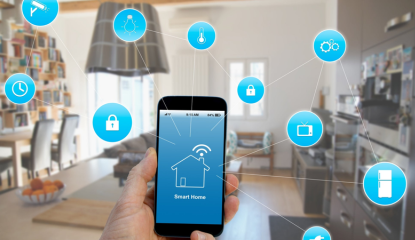
Building a Smart Home Step by Step
- Choose your ecosystem: Select a voice assistant and hub (e.g., Amazon Alexa, Google Home, Apple HomeKit).
- Upgrade your network: Reliable Wi-Fi is essential for device communication.
- Start with basic devices: Begin with smart plugs or lights, and familiarise yourself with automation through the app.
- Expand with security and HVAC controls: Add smart locks, cameras, and thermostats for enhanced security and convenience.
- Integrate appliances and automation: Gradually expand to include smart appliances and complex routines.
For a comprehensive guide, see How to Make Your Home a Smart Home.
Conclusion
Smart home solutions use IoT and automation to improve safety, efficiency, and comfort. The global market is growing, with increased adoption in Bangladesh for energy savings and security. Despite challenges, the long-term benefits are significant. Explore our articles on smart lighting and home automation for additional insights.
Author: Al-Amin Ifty, Design Doctors Studio @2025

